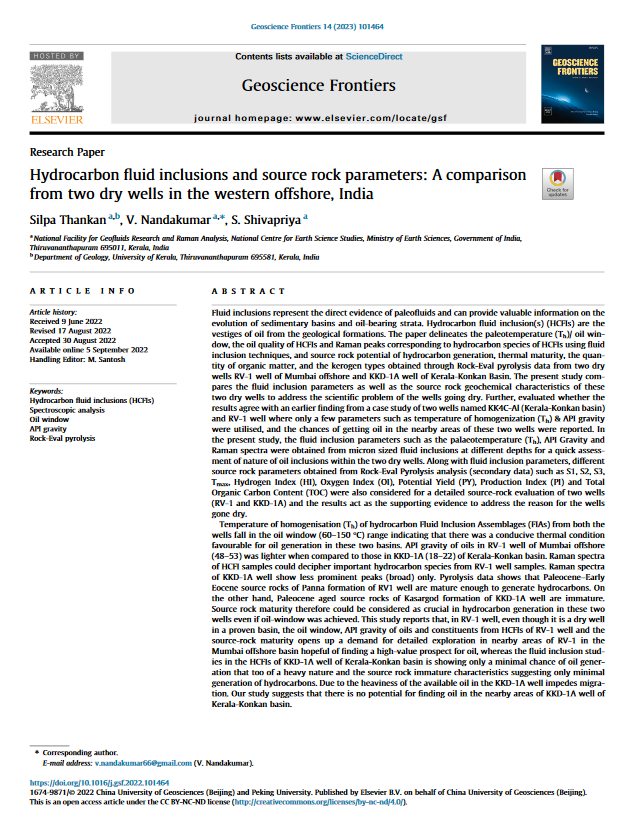
The temperature of homogenization (Th) obtained through microthermometric analysis of the fluid inclusions reveals the minimum entrapment temperature to which the sedimentary rock formations have been heated to. Coeval-aqueous inclusions associated with HCFIs show Th within the oil window range 60-140 °C, indicating a temperature favourable for oil generation in Kerala - Konkan basin. The secondary data of Rock-Eval pyrolysis analyses were used to determine the source rock maturity of two wells i.e., RV-1 well from Mumbai offshore basin and KKD-1A well from Kerala - Konkan basin. Source rock parameters indicates that source rocks of RV1 well of Mumbai offshore are mature and that of KK-D-1A wells of Kerala-Konkan basin are immature. Total Organic Carbon (TOC) content present in different depths of RV-1 well is indicating desirable organic matter content of >1 wt.% (maximum TOC of 39 wt.% in the Palaeocene - Eocene sediments of Panna formation). On the other hand, TOC of organic matter present in the source rocks of Kasaragod formation in the KK-D-1A well shows TOC <1 wt.% only, indicating that the Palaeocene - Eocene sediments of Kasaragod formation is having poor source rock characteristics, due to which the generation of hydrocarbon might not have occurred even if it is entered in the oil window (60-140 °C).
Bibliographic Info: Silpa Thankan, Nandakumar, V., Shivapriya, S.. (2023). Hydrocarbon fluid inclusions and source rock parameters: A comparison from two dry wells in the western offshore, India.https://doi.org/10.1016/j.gsf.2022.101464.




 RTI Act
RTI Act

